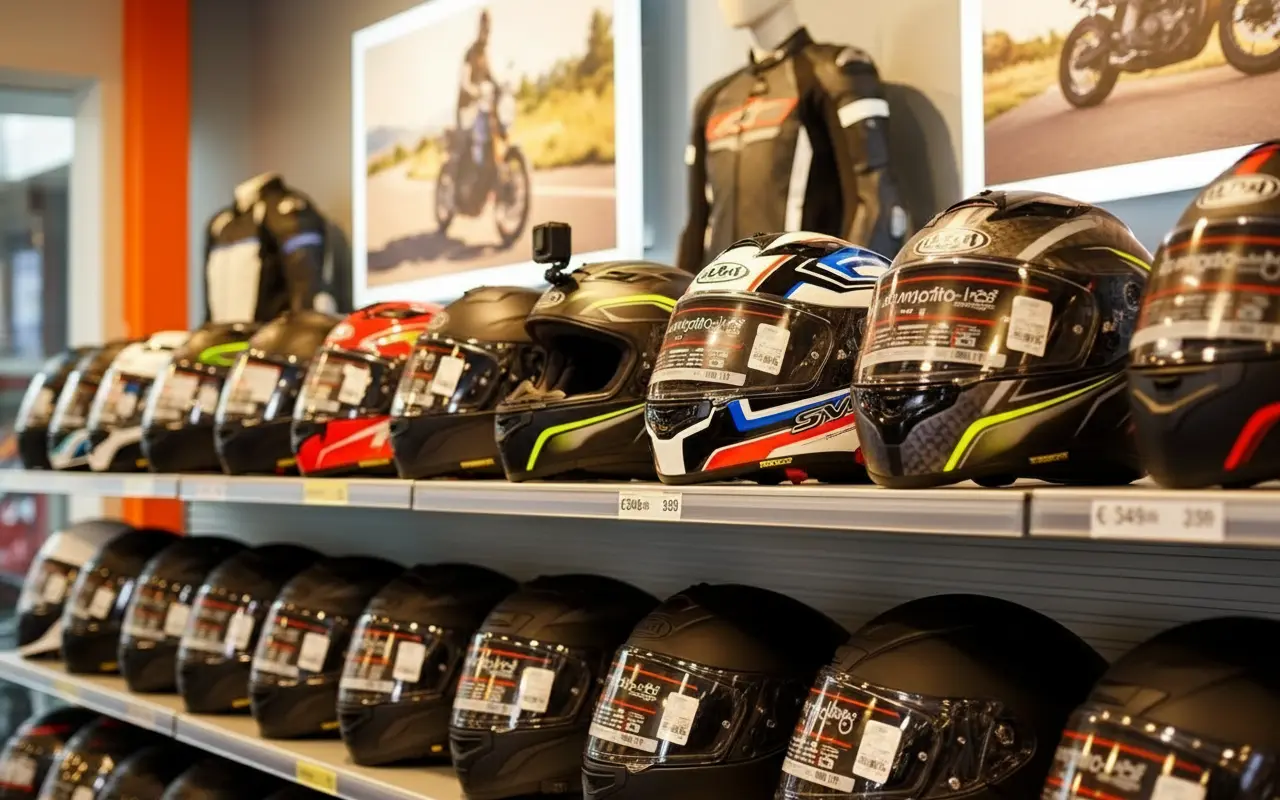Out With the Old: What Was ECE 22.05 All About?
Since 2007, ECE 22.05 has set the standard for motorcycle helmets in Europe. No helmet made it legally to the sales floor without a very specific white label marked with an “E”—for Europa, naturally—plus a number identifying the approving country. There were more rules, too:
- Helmets needed four reflective strips: one at the front, one at the back, and one on each side.
- The chin strap couldn’t be just any old clasp; it had to meet defined resistance standards.
Testing under ECE 22.05 wasn’t exactly a walk in the park: helmets were flung at two different anvils at a brisk 27 km/h (that’s nearly 17 mph for those on the imperial system) and smashed from a height of 3 metres (which hits the ground at around 7.5 metres per second).
Get caught sporting a non-compliant helmet? That could cost you €90 (approximately £77 or $97), plus a loss of three points on your license, just as set out in Article R431-1 of the Highway Code—a rather costly mistake.
What’s New with ECE 22.06?
The fresh ECE 22.06 regulation is rolling out with both familiar and brand-new requirements. The obligatory white E-label, the reflective strips, and the strong chin strap stay put. But brace yourself: “
The tests will be more realistic and comprehensive,
” promises Eric Thiollier, the president of France’s Fédération française des motards en colère.
So what does this mean for your future helmet?
- Helmets face three separate impacts, all at different speeds.
- Testing spots multiply—from six impact points under the old rules to a staggering 18 now.
- Each helmet is fired at a velocity of 215 km/h (that’s about 134 mph—faster than the average supermarket run!).
- The visor isn’t left out: it gets its own tests for impact and scratch resistance.
- To top it all off, a sensor inside the helmet will measure how well it resists abrasion, cranking up test accuracy.
The Question of Cost
All this science and gadgetry isn’t free. There are, naturally, some worries about prices climbing as production and testing become more demanding.
“The cost of certification will go up, and part of that could be reflected in the retail price,”
notes Thiollier.
“But this shouldn’t become an excuse to hike up prices excessively for helmets bearing the old certification.”
Already Own an ECE 22.05 Helmet? Don’t Panic
The good news for those already kitted out: you can keep using your ECE 22.05 helmet well beyond July 1. In fact, retailers have until December 31, 2023, to keep selling them. As of January 1, 2024, however, shops will have to stick with helmets carrying the new certification if they want to stay on the right side of the law. But those trusty older models will remain road-legal, so you aren’t forced to upgrade overnight.
Better Helmets, Stronger Standards—With a Graceful Transition
The ECE 22.06 law ushers in a new era of stronger, safer, and more innovative helmets throughout Europe. And crucially, the shift won’t punish those who have already invested in quality headgear. It’s a gradual transition, with the aim of making roads safer for everyone—without leaving seasoned bikers feeling left behind. So, next time you suit up, rest assured: your helmet is about to become even more of a guardian angel than before.

